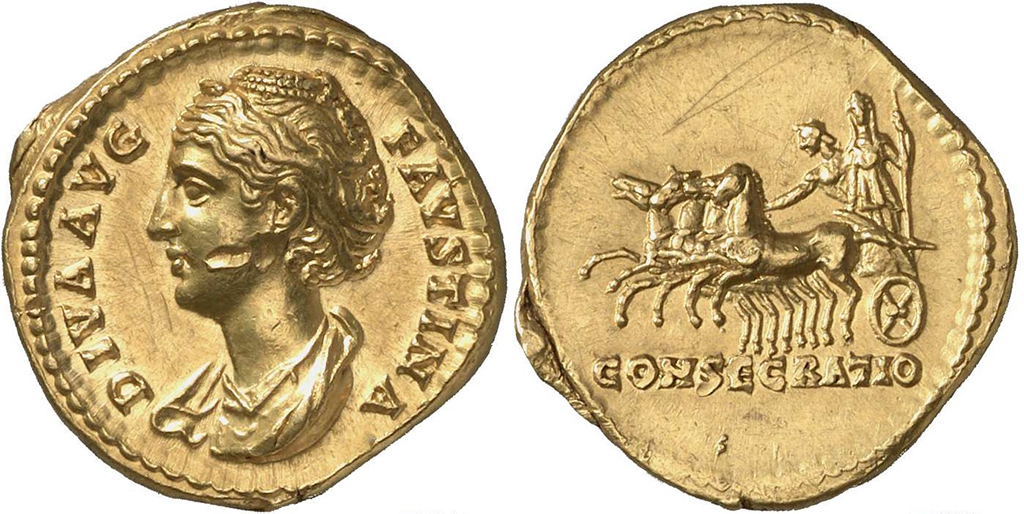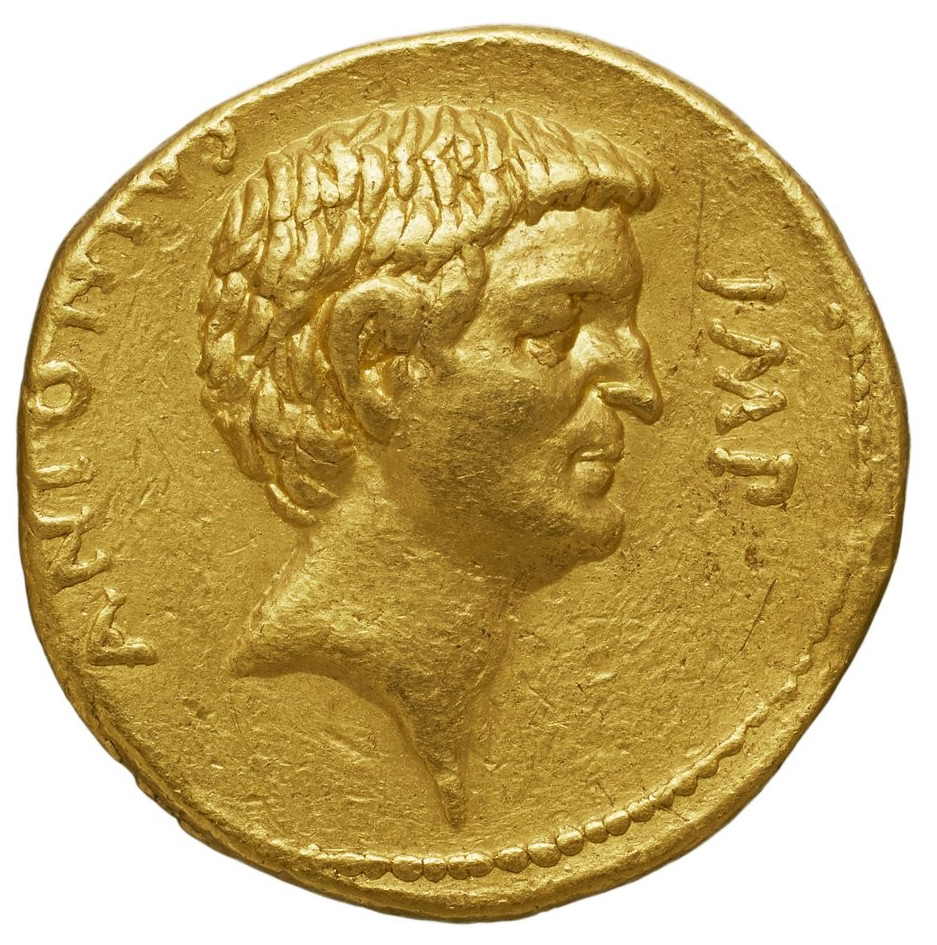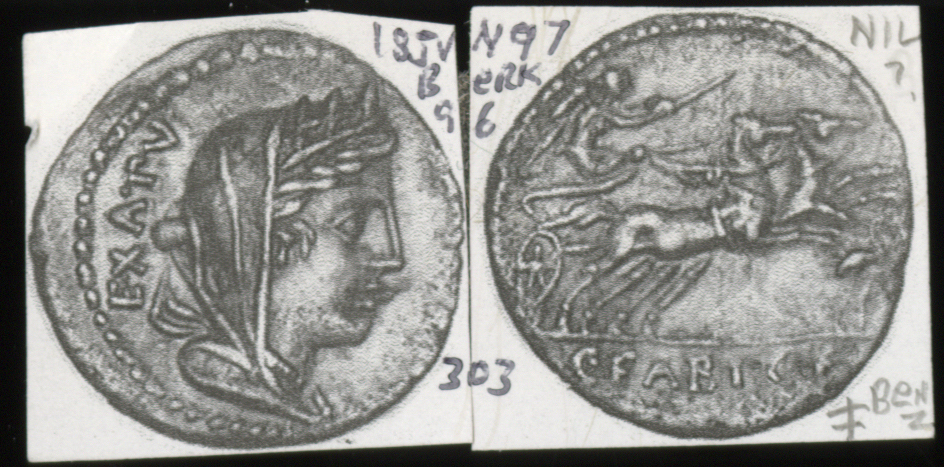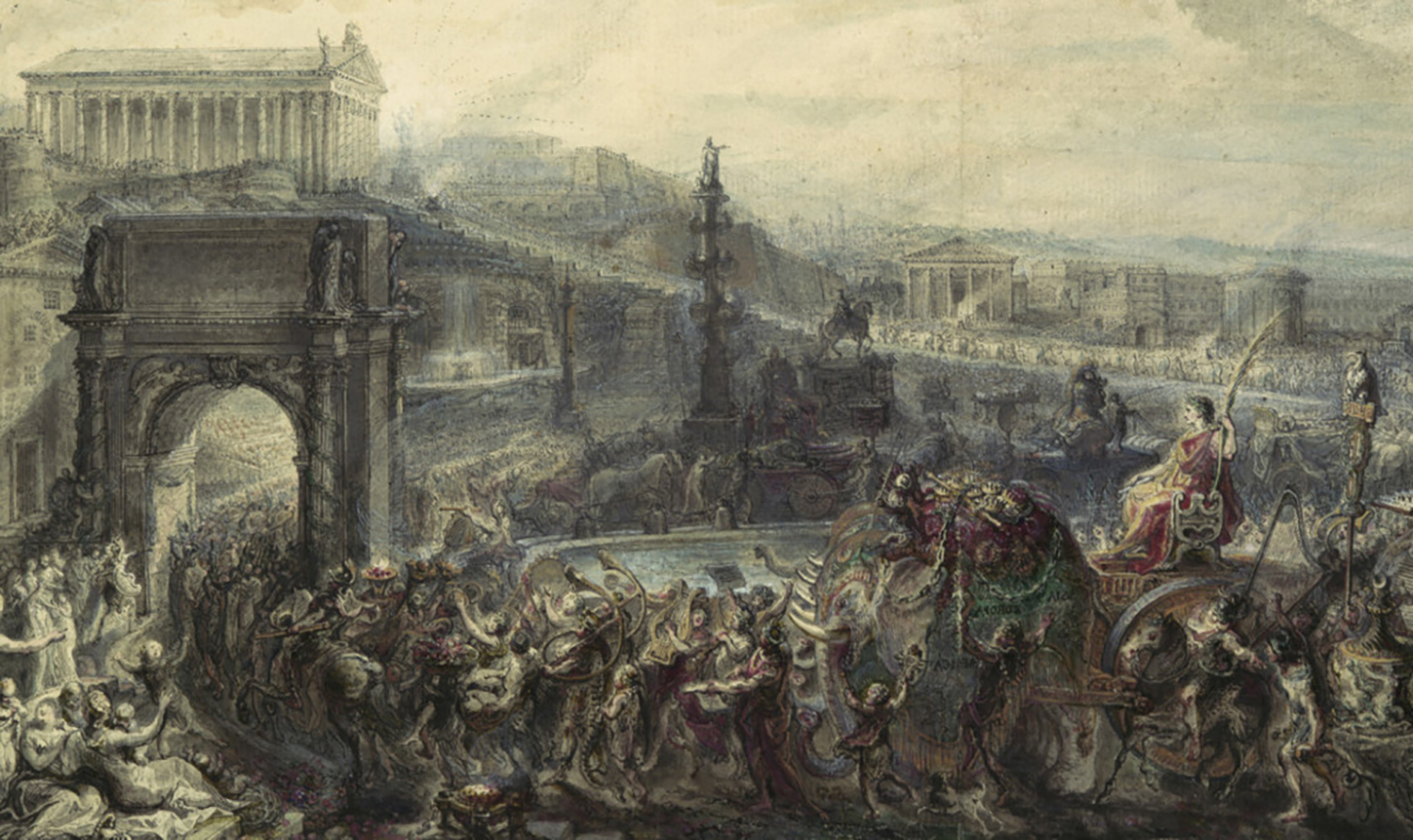Antonine Pyres and Consecratio Coins
by Steven Burges
In March of the year 161 CE, the Roman emperor Antoninus Pius died at the age of 74 at his villa near Rome after reportedly “eating Alpine cheese at dinner rather greedily” (Historia Augusta, M. Ant. 12.4). His death marked a turning point in Roman imperial history, since, for the first time, a deceased emperor was succeeded by a set of official co-regents, Marcus Aurelius and Lucius Verus. Hadrian had organized their joint adoption by Antoninus 23 years earlier.
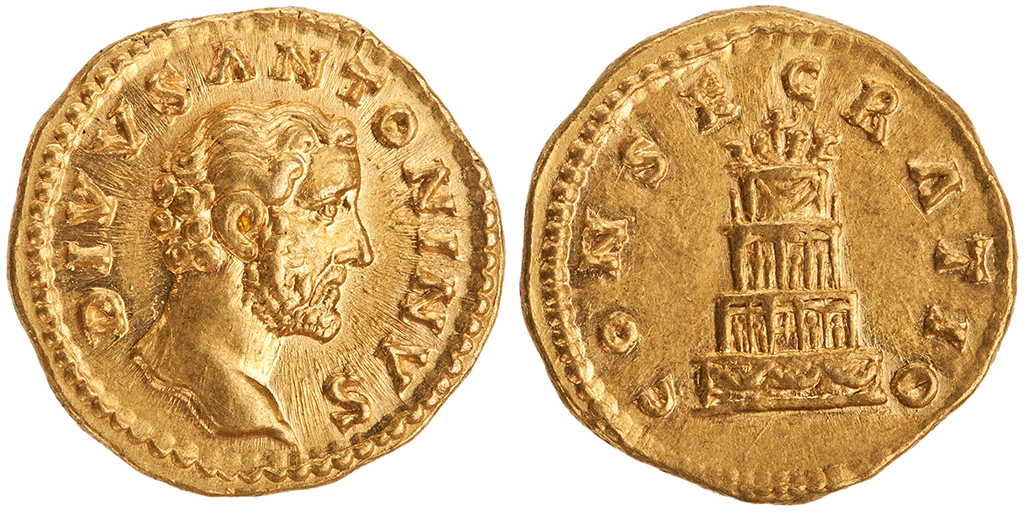
The co-rulers issued coinage – bearing the obverse legend Divus Antoninus, or the divine Antoninus—to commemorate their father’s passing and subsequent deification, and it reflected the unprecedented transition of power and the continuation of the familial piety that had earned Antoninus the title “Pius.” An unparalleled type from the series contained the first images of a funerary pyre on which the emperor was cremated to appear on gold denominations of the Roman mint (fig. 1). In fact, the pyre became the exclusive reverse type of the aurei struck for Divus Antoninus in addition to becoming the most prevalent type of the silver and bronze issues. All included the legend consecratio, which likely referred to the funereal process of deification itself.
In an effort to discover why the innovative iconography of the pyre came to dominate the commemorative coinages of Antoninus, I conducted a die study and hoard analysis of the aurei honoring Divus Antoninus. I then compared the results to studies of aurei minted after the death of his wife, the empress Faustina the Elder. She died and achieved godhood in 140 CE, at the beginning of her husband’s reign. While Antoninus produced a massive series of aurei for Diva Faustina with 24 different reverse types over a period of nearly twenty years, only one uncommon type from the early issues bore the consecratio inscription (fig. 2). It depicts the empress and a female driver in a quadriga – perhaps the celestial vehicle that bore her to the heavens. Although absent from her aurei, contemporary bronzes announcing her apotheosis were the first of any denomination to carry images of a funerary pyre.
In the years to follow pyres continued to adorn currency honoring deceased empresses and emperors, but primarily, they were found on the silver and bronze coins. The numerous tiers and ornate decorative sculptures, garlands, and tapestries align with the descriptions of ancient eyewitnesses (Cassius Dio, Historia Romana 75.4-5). Between the years 310 and 313 CE, the emperor Constantine would strike the last pyre coin, a rare gold solidus, to honor his deified father, Divus Constantius (fig. 3).
My analysis of the original Divus Antoninus aurei has enabled the identification of 30 obverse and reverse dies from 70 coins all with the same reverse type. In contrast, the earlier aurei of Diva Faustina survive in over 900 examples with nearly two dozen reverses, reflecting both the extraordinary scale and longevity of their production (Martin Beckmann, Diva Faustina: Coinage and Cult in Rome and the Provinces, 2012). Despite the limited run of the Antoninus coins, the ratio of dies observed to the number of coin examples is nearly equivalent. Hoard evidence from Italy, France, and Portugal also suggests that the two coinages circulated within similar regions.
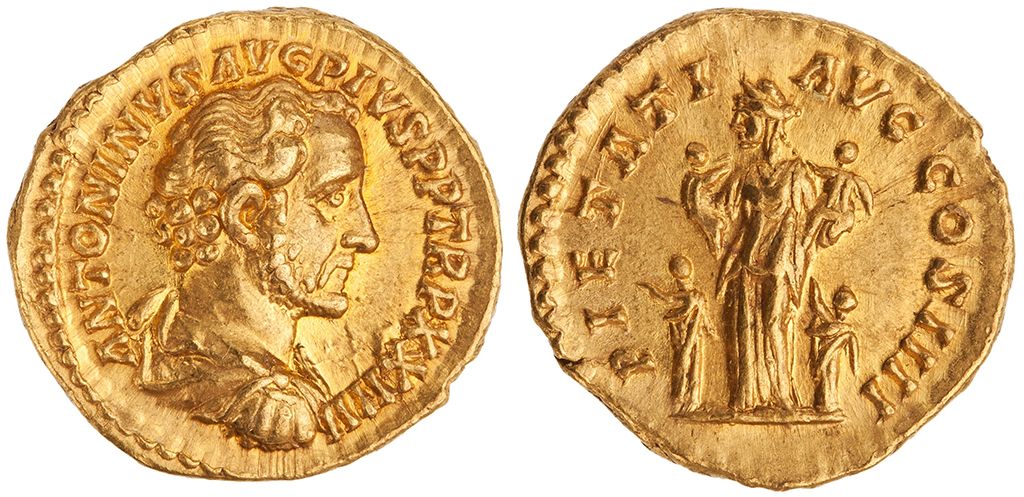
The difference lies in the significant expansion of the novel consecratio reverse with the pyre to the aurei under the adopted Marcus and Lucius. This suggests that they intended the pyre to serve as a specifically Antonine advertisement of dynastic continuity for the elite users of gold coinage. Further, it was a memento of the cremation and deification ceremony itself, which the co-rulers jointly oversaw, as the inscription on the pedestal of the column of Antoninus Pius indicates. The dynastic uncertainty of the time had been likewise countered in some of the last coins struck during Antoninus’s life. They depict the fecundity of his daughter Faustina the Younger surrounded by her four daughters: Lucilla, Cornificia, Fadilla, and Annia Faustina (fig. 4).
As I continue this research, I will expand the scope to the pyre reverses found in other denominations struck under Marcus Aurelius and Lucius Verus along with other contemporary consecratio types, in order to continue unveiling the significance they held for the citizens, soldiers, and senators who used the coins.
Steven Burges is a PhD candidate in the Department of History of Art & Architecture at Boston University. He is currently writing a dissertation that examines the representation of Roman imperial funerary pyres on the coinage of Antoninus Pius and Marcus Aurelius and the commemorative significance of these representations within the ideology of antiquity and beyond. He was a participant in the 2018 Eric P. Newman Graduate Seminar.


